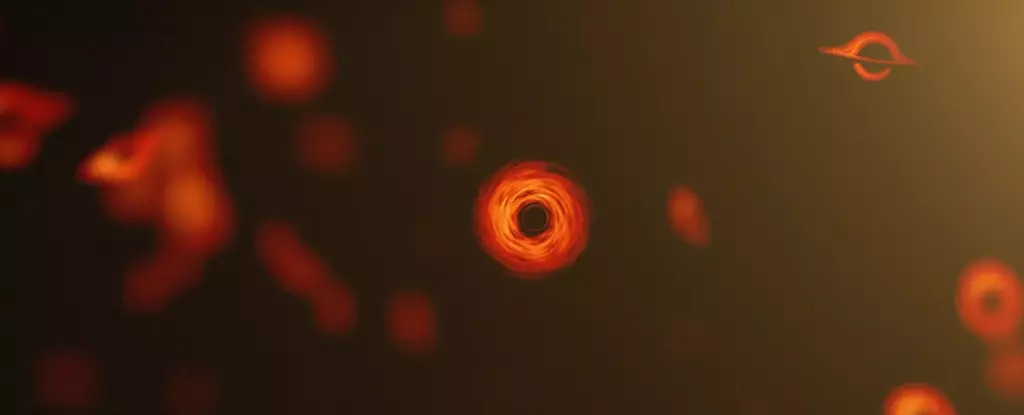The idea of primordial black holes (PBHs) has intrigued astrophysicists and cosmologists for decades. These elusive entities are theorized to have formed just moments after the Big Bang, born from regions of high density within the universe’s early matter. Unlike their massive counterparts, PBHs are expected to be compact and small-scale, with sizes that vary from subatomic to a few solar masses. Their potential roles in the cosmic narrative are vast: not only are they candidates for dark matter, but they may also serve as sources of primordial gravitational waves and solutions to perplexing challenges within contemporary physics. However, the search for definitive evidence of PBHs has become increasingly urgent, leading scientists to propose innovative methods to detect these mysterious relics.
The Significance of Detecting PBHs
The importance of confirming the existence of PBHs cannot be overstated. If proven real, they could reshape our understanding of dark matter, which, despite constituting a large portion of the universe, remains undetected through traditional means. Moreover, the existence of PBHs could provide insights into early cosmic events while helping to reconcile several unresolved theories in physics. Although there have been numerous theoretical advances and some indirect evidence, a direct observation of PBHs is still lacking. This uncharted territory in astronomical research evokes both excitement and frustration among scientists, fueling a renewed interest in identifying strategies for detection.
In recent years, physicists have started to investigate unconventional methods for locating primodial black holes. A particularly innovative concept involves examining celestial bodies within our solar system, such as asteroids, moons, and dwarf planets. Researchers, including physicists De-Chang Dai and Dejan Stojkovic, have proposed that if PBHs exist within these objects, they would gradually consume the denser materials found within liquid cores, potentially creating hollow spaces. This hypothesis presents an intriguing avenue for investigation: by analyzing the physical properties of these celestial bodies, such as mass and density, scientists could identify candidates likely to host PBHs.
The implications of such a method are vast. For instance, if BPHs leave hollow structures within rocks or celestial materials, measuring the density and structure of asteroids or moons could lead scientists to potentially hollow objects worth further exploration. This could pave the way for future robotic missions equipped to delve into the mysteries of these cosmic bodies, offering a glimpse into conditions that may resemble those of the universe’s infancy.
Microchannel Detection and Materials Testing
Further exploring the potential for PBH detection, researchers have proposed scanning for the minuscule channels that a small PBH could leave as it pass through solid materials. In theory, a PBH’s passage would create a tiny tunnel with a radius comparable to the mass of the BH. For example, a hypothetical PBH weighing around 10^23 grams could leave behind a microchannel with a radius of just 0.1 microns. This opens up various possibilities for utilizing existing materials, such as glass, metals, and rocks, to search for evidence of PBHs without requiring extensive custom-designed equipment.
To effectively discover these microchannels, it is crucial to maintain the integrity of the detecting materials. By isolating samples from environmental interferences, researchers could identify changes in the materials that would indicate a PBH’s passage. The proposed method parallels neutrino detection techniques, where the slightest alterations in a dense medium provide clues to elusive particles. Though the anticipated flux of PBHs is minor, the potential rewards of such findings could be monumental, possibly transforming our comprehension of the cosmos.
The ongoing exploration of PBHs not only touches upon their existence but also suggests substantial implications for the broader fields of cosmology and fundamental physics. The concept that PBHs could be hidden within the cores of stars or produce detectable gamma rays contributes to a larger narrative of dark matter research. If PBHs preferentially radiate gamma rays, identifying their signature emissions could serve as indirect evidence towards their observations.
Moreover, advancements made in understanding how PBHs interact with surrounding matter could shed light on conditions during the universe’s earliest epochs. By uncovering the behaviors and effects of these primordial entities, scientists may be able to elucidate critical stages of cosmic evolution—dynamic eras that remain largely shrouded in mystery.
The journey towards definitively uncovering primordial black holes is still in its infancy, but the multiplicity of proposed detection methodologies showcased by researchers exemplifies the resilience of scientific inquiry. As new technologies emerge, and as our understanding of the universe deepens, the quest for PBHs not only captures the imagination of scientists but also holds the potential to unlock answers to some of the most profound questions in cosmology, physics, and our understanding of existence itself. The ultimate discovery of PBHs could signify a groundbreaking paradigm shift in the field, inspiring generations of researchers to continue probing the hidden depths of our universe.


Leave a Reply